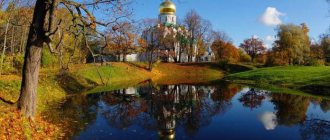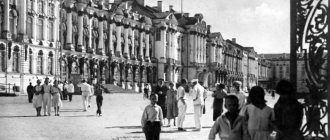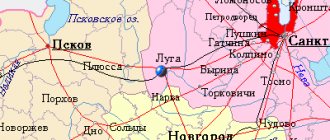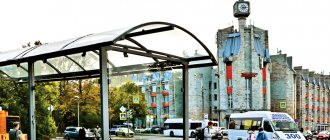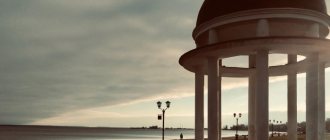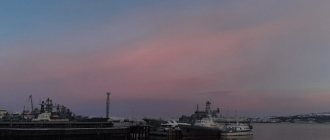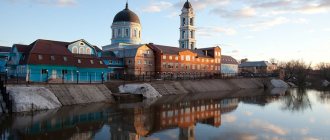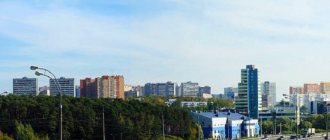Pushkin is a city near St. Petersburg. A large tourist, scientific, educational and military-industrial center. Included in the list of monuments protected by UNESCO, as part of the object “Historical Center of St. Petersburg and related complexes of monuments.”
The city is home to the Tsarskoye Selo Museum-Reserve, a monument to urban planning art and a palace and park ensemble of the 18th - early 20th centuries. The reserve includes the Catherine Park with the Catherine Palace and other buildings.
Until 1918 it was called Tsarskoe Selo, from 1918 to 1937 - Detskoe Selo.
The population of the city of Pushkin is about 110 thousand.
Pushkin was founded in 1710 as the imperial country residence of Tsarskoe Selo. Received city status in 1808.
History of Tsarskoye Selo (Pushkin): basic information about the sights
The history of the appearance of a wonderful monument in the city of Pushkin - the Catherine Palace in Tsarskoe Selo - is associated with a beautiful legend. There was a Finnish manor, Saari Mois (translated as “manor on a hill”), where Peter the Great often visited. The king was greatly impressed by the hospitality of the Dutch farm owner, Saara, and the dairy products with which she treated the distinguished guest. In 1710, Peter gave this manor to his wife Ekaterina Alekseevna. In her honor, the palace built later began to bear the name Catherine. One of the versions of the history of the name “Tsarskoe Selo” is as follows: “Saari Mois” was remade into the more familiar to Russian ears “Sarskaya Manor”, “Sarskoe Selo”, and during the reign of Elizabeth Petrovna the area received the name “Tsarskoe Selo”. It was no longer a modest manor, but a huge country palace complex, around which a settlement of palace servants grew up, giving rise to the city. After 1917, when the palaces became museums, the name was changed to “Children’s Village”, because the houses of the courtiers and palace administration buildings were turned into kindergartens and sanatoriums. In 1937, in connection with the centenary of the death of A.S. Pushkin, the city began to bear the name of the poet. The main attractions and history of the city of Pushkin will be discussed below.
Area, relief and climate
The area of the city of Pushkin is 201 square meters. km. It is located on the territory of the Prinevskaya lowland, to the left of the river. Not you. There are various landscape forms: plains, ridges, terraces, valleys and hills. Forests are mixed with agricultural land.
The city of Pushkin (St. Petersburg) is home to springs that feed ponds and streams. 350 million years ago (Paleozoic) there was a sea here. Clay, sands, limestone, and sandstones have survived to this day. Their layer reaches 200 m and covers a crystalline diabase, gneiss, and granite foundation. The formation of the current relief was stimulated by a cover of ice (the Valdai glaciation, which occurred 12,000 years earlier).
When thawing occurred, the Littorine Sea appeared, whose depth was 8 m greater than the current one. 4000 years ago the tide ebbed and the river appeared. The Neva is the result of post-glacial deposits. For 2.5 thousand years, right up to the present day, no changes in relief were noticed.
The local climate is characterized by moderation and humidity. It is transitional between continental and maritime. Summer doesn't last long and it's rarely hot. The winter is much longer, interrupted by thaws.
The transition periods of spring and autumn are long, so average indicators are more common for local residents. Temperatures are above freezing between April and November. The coldest month is February. The annual precipitation level is 590 millimeters.
Atmospheric currents, as a rule, are clean and fresh, enter here from the south, due to which the weather is mild. One air mass can quickly give way to another. Cyclones are frequent. The sun is least in November-January. In general, the local climate is quite comfortable for life.
Parks and palaces in Tsarskoe Selo
Tsarskoe Selo, now the city of Pushkin, was formed as the summer residence of the imperial court. The first palace built in Tsarskoe Selo is the Catherine Palace, it was erected by the architect Rastrelli in the mid-18th century and is a major masterpiece of the Baroque style. At the end of the 18th century, the Alexander Palace, an outstanding monument of classicism, was built. Catherine and Alexander parks, formed around the palaces, are excellent examples of landscape gardening art of the eighteenth century. The newest museum in the museum complex in Tsarskoe Selo is the Military Chamber, located on the territory of the Fedorovsky town. This is the first and so far the only museum in St. Petersburg and Russia that tells about the First World War.
